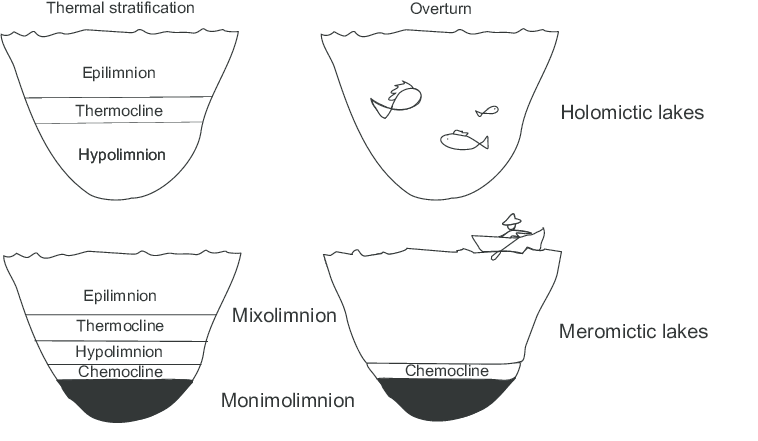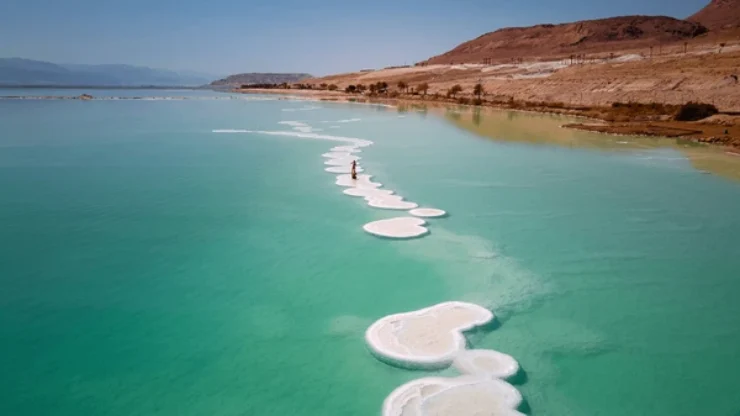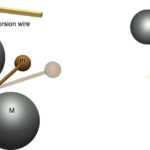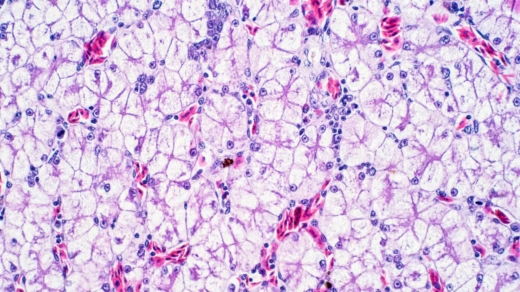The Dead Sea salt giants massive halite formations beneath one of the saltiest bodies of water on Earth are unlocking vital clues about Earth’s geological past. Situated in the Jordan Rift Valley, the Dead Sea’s rapid water-level decline and extreme salinity make it a natural laboratory, revealing how salt, sediment, and climate interact across time.
Salt Giants: A Living Laboratory of Crystal Formation
At the heart of current research are the “salt giants” massive halite (salt) deposits stretching kilometres wide and over a kilometre deep. These salt structures form as the Dead Sea’s ultra-saline water evaporates. Remarkably, this is the only place on Earth where such deposits are still actively forming, unlike now-inactive salt giants under the Mediterranean.
To investigate this, scientists like Eckart Meiburg and Nadav Lensky have combined field studies, lab experiments, and computer models. As a result, a major discovery has emerged: salt deposition happens all year, not just in winter. In summer, evaporative cooling causes the surface water (epilimnion) to sink, forming salt crystals that “snow” to the bottom. In contrast, winter sees the entire water column become supersaturated, triggering widespread halite formation.
Moreover, even the type of crystal varies by season. Winter forms small, smooth cubic crystals, whereas summer forms larger, rougher ones—especially in deeper areas (hypolimnion). These seasonal changes focus salt from shallow to deep regions, ultimately creating towering “salt chimneys” up to 20 metres high at spring sites. There, calcium carbonate and gypsum precipitate first, with halite forming later on the exterior.
How Salt Fingering Fuels the Growth of Dead Sea Salt Giants
Another key driver of year-round halite formation is double-diffusive salt fingering. During summer, the Dead Sea exhibits stable stratification, with warmer, saltier water above cooler, less saline water. This leads to an instability: salt-rich fingers sink, lose heat, and become supersaturated—thus leading to halite crystallization. Simultaneously, cooler, lighter water rises to replace them.
Furthermore, computer simulations confirm that this process explains both the reduced salinity in the epilimnion and increased precipitation in the hypolimnion during midsummer. Importantly, salt formation is more intense in the southern part of the lake. This occurs because the stability ratio there is lower, which enhances vertical salt transport and crystallisation.
No other place on Earth allows scientists to observe active salt giant formation like the Dead Sea salt giants do.
Hydrographic Shifts and Their Role in Dead Sea Salt Giant Formation
Historically, the Dead Sea’s salinity originated from ancient Mediterranean seawater trapped around 5 million years ago. Over time, the lake evolved into a terminal water body with no outlet, gradually becoming hypersaline. Since the 1980s, however, water diversion from the Jordan River has changed its stratification. Specifically, it has shifted from a meromictic (permanently layered) to a holomictic (mixing annually) state—triggering halite precipitation.

Additionally, wind plays a significant role in the lake’s hydrodynamics. It generates small surface waves (around 1 cm) and much larger internal waves (up to 10 metres) along the density interface. Earth’s rotation further contributes by creating large-scale cyclonic wave patterns. Notably, as Jordan River inflow has decreased, the resulting reduced density contrast has amplified internal wave activity in recent decades.
The Coastline’s Response to the Rise of Dead Sea Salt Giants
As the Dead Sea’s level continues to drop, new beaches form yearly—capturing vital sediment data. Research by Eyal et al. (2021) shows that storm waves sort gravels in predictable patterns. For instance, particle size decreases alongshore, due to optimal conditions for unidirectional drift. In addition, “smart boulders” fitted with sensors have helped researchers track gravel motion during storms. These data align closely with theoretical models predicting the wave force needed for boulder transport.
Moreover, rivers entering the Dead Sea are undergoing major changes. As the lake recedes, streams cut deeply into the exposed sediment. This process of incision then migrates upstream. Surprisingly, some steep stream sections now show increased meandering—a phenomenon typically expected only in flatter landscapes.
Sediment Plumes and Their Impact on Dead Sea Salt Giants
River inflows create dynamic freshwater and saltwater plumes. Typically, flash floods bring positively buoyant, sediment-rich freshwater that spreads across the lake’s surface. Conversely, in the south, the Nahal Ha’Arava stream delivers ultra-dense brines (1.35 g/cm³) from potassium extraction plants. These form hyperpycnal gravity currents—underwater flows hugging the lakebed. Consequently, halite precipitation occurs rapidly, forming salt deltas near the river mouth.
These ongoing formations make the Dead Sea salt giants a living record of environmental change.
Why Dead Sea Salt Giants Matter for Climate and Water Management
Beyond its geological marvels, the Dead Sea serves as a powerful analogue for past and future Earth systems. Its salt giants offer clues about ancient climate shifts, while its receding shores model what modern coastlines may face under sea-level change.
Additionally, these insights are essential for infrastructure planning and water management in arid regions. Nevertheless, many uncertainties remain. For example, scientists are still working to understand why halite deposits vary in thickness and texture across the lake. The effect of stratified surface plumes on sedimentation also requires more research.
Furthermore, the growth mechanisms behind salt chimneys and domes remain poorly understood. Equally important is evaluating the potential impact of large infrastructure projects—like the Red Sea–Dead Sea Canal. This canal could introduce less salty water, potentially reversing the lake’s holomictic state and disrupting current salt dynamics.
Another crucial concept is hysteresis—the idea that the lake’s behaviour may differ depending on whether water levels are rising or falling. This feedback loop affects salinity, sedimentation, and erosion patterns, offering vital lessons for managing similar environments worldwide.
Conclusion
With its unique chemistry, dynamic layering, and fast-changing shoreline, the Dead Sea is more than a natural wonder. It is a living archive of geological processes, climate change, and water system evolution. Accordingly, it remains one of Earth’s most valuable sites for scientific discovery—helping us look back through time and forward into a warming, water-scarce future.
Reference
The research has been published in the Annual Review of Fluid Mechanics:
https://www.annualreviews.org/content/journals/10.1146/annurev-fluid-031424-101119
Read More Topics:
- Mackerel Filter Traps 99% of Microplastics Before They Hit Your Drain
- Fetal Microchimerism: How a Baby’s Cells Stay With the Mother for Decades to Repair and Protect
- Zombie Ants Controlled by a Parasitic Fungus for 48 Million Years
- New Study Reveals how dark chocolate reduces biological aging
- New Limb Evidence Confirms Sahelanthropus tchadensis as the Earliest Hominin Biped
- How a 19 Year Old Became the Youngest Person to Face Alzheimer



















